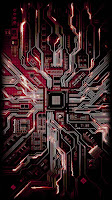Ethical hacking, How to conduct a Sticky Keys hack
Physical access hacks may sound scary because they can be used maliciously by attackers on stolen or unattended computers. However, they also have constructive applications. Ethical hackers at home and at IT help desks use techniques like the Sticky Keys hack or the Mac root hack to recover files that would otherwise be lost due to a forgotten password. If you have an old computer in the garage or attic with family photos or other important documents that you can't access because no one remembers the computer's password, these hacks can help.
Warning: Do not perform either of these hacks on your main computer, because they could leave your machine vulnerable to attack. You can usually find an old desktop or laptop if you ask around. Get creative, but stay ethical; be sure to get the owner's permission before trying out these hacks on someone else's computer. If you can't find an extra Windows or Mac computer to practice on, you can still read this chapter to understand the dangers of physical access attacks.
The Sticky Keys Hack
Sticky Keys is a Windows feature that makes it easier to issue certain keyboard commands, like CTRL-C to copy or CTRL-V to paste, by allowing you to press the keys one after another instead of all at once. Sticky Keys is triggered by pressing SHIFT five times and can even be turned on from the Windows login screen, before a username or password has been entered.
For this hack, we'll replace the Sticky Keys program file with another file, cmd.exe. That way, instead of launching the usual Sticky Keys assistant, pressing SHIFT five times will launch a command prompt. This is a text-based program that lets us enter commands directly into Windows. By launching a command prompt at the login screen (see Figure 2-1), you'll be able to add a new username and password, give yourself administrator-level access to the computer, and access the computer's files, all without knowing the login information on that computer!
Since Windows 10 computers that have been updated in 2019 or later are safe from the Sticky Keys hack, you'll need an older Windows computer to try out the hack for yourself. You'll also need a Windows 10 installation disc or USB drive. To create one, follow the instructions in Appendix A.
An image of a lock screen with the message, 'The system cannot find message text for message number 0x2350 in the message file for Application.'NO STARCH PRESS
Figure 2-1: The Sticky Keys hack brings up a command prompt window instead of the Sticky Keys assistant.
Booting from a Windows 10 Installation Disc
To replace the Sticky Keys program with the command prompt program, we need to access the hard drive that contains those program files using a Windows 10 installation disc or USB drive. Once you've created an installation disc, as described in Appendix A, insert the disc and then restart the computer.
We need to tell the computer to load the operating system (OS) from the disc or USB drive instead of from the computer's hard drive. To do this, we'll access either the boot menu or the Basic Input/Output System (BIOS), which contains basic settings that control your computer when it starts up. Different PC manufacturers and different versions of Windows cause the instructions to vary a bit, but the following steps combined with a little web searching will get you into most older Windows computers

Comments
Post a Comment